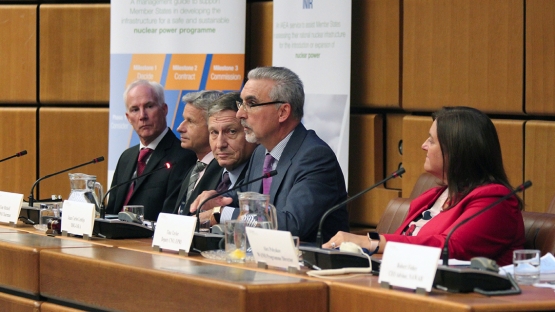The IAEA Milestones Approach provides a comprehensive method to establish the infrastructure for a nuclear power programme and includes 19 elements, through three progressive phases of development. Infrastructure, in this sense, also includes an enabling environment in which a successful nuclear project can take place, such as legal framework and safeguards, explained Milko Kovachev, Head of the Nuclear Infrastructure Development Section at the IAEA. “This is about an environment required for the safe, secure and sustainable development of nuclear power and meeting specific requirements for this technology to be used peacefully and safely.”
The E-learning for Nuclear Newcomers and Nuclear Infrastructure Bibliography complement the Nuclear Infrastructure Competency Framework database to assist in planning activities required throughout each phase.
Upon request, the Agency conducts an Integrated Nuclear Infrastructure Review (INIR) mission to assess a country’s infrastructure status for a specific phase of the Milestones Approach. Since 2009, the Agency has completed 27 INIR missions in 20 Member States. Following the General Conference, the Agency will conduct an INIR for Phase 2 in Egypt and a follow-up INIR for Phase 1 in Ghana.
To address industry challenges, EPRI conducts research and development, particularly related to improving the engineering and construction of nuclear power plants. Tina Taylor, EPRI Deputy Chief Nuclear Officer, stated that concrete has been a source of challenges for many projects. “We are working on practical solutions related to concrete because there is so much time and money involved. Saving a percentage of the time it takes in the concrete process would be of great value worldwide,” she explained.
Over decades, each organization has developed resources that complement and work toward a shared goal to ensure the safety of people and the environment. “The international organizations have long-lasting experience and have provided in the past and are ready to provide in the future support to nuclear power programmes,” Kovachev said. “International cooperation — showing the openness, transparency and support of three important international organizations — is key for success for a technology like nuclear.”
At the side event, the IAEA, WANO and EPRI released a joint white paper, Nuclear Industry New Build/New Entrants, to present what each organization can provide in terms of support throughout the new entrant journey.





